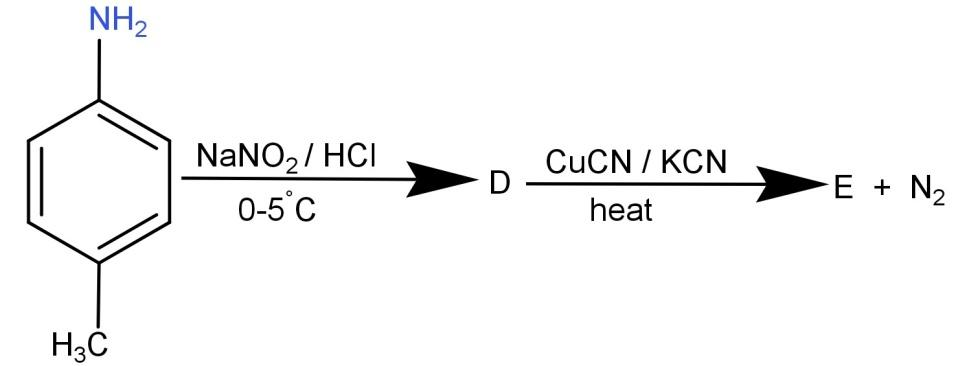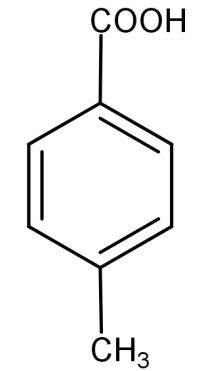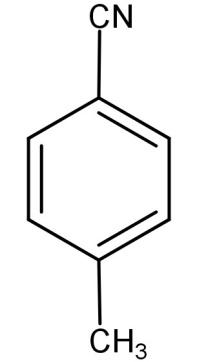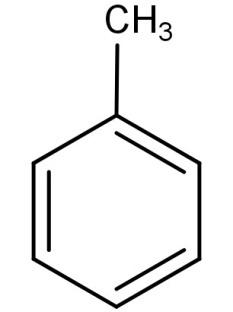
Answer
447k+ views
Hint: The given initial compound is p-toluidine and is a primary amine. The reactant $NaN{O_2}/HCl$ causes diazotization of the primary amine and leads to the formation of its corresponding diazonium salt. Then its reaction with CuCN or KCN causes the replacement of the diazonium group with the cyano group.
Complete step by step answer:
In this question we need to go step by step for each reactant and first find D and then E.
-So, let us begin by finding D.
We know that the initial given compound is p-toluidine (${H_3}C - {C_6}{H_4} - N{H_2}$) and it is reacted with $NaN{O_2}/HCl$ which are responsible for diazotization reaction.
The diazotization reaction is a reaction where a primary aromatic amine is converted to its corresponding diazonium salt by the use of nitrous acid and some other acid.
So, p-toluidine (${H_3}C - {C_6}{H_4} - N{H_2}$) on reaction with $NaN{O_2}/HCl$, leads to the formation of its corresponding diazonium salt which is compound (D). This compound (D) is 4-methyl benzenediazonium chloride. The reaction is shown below:
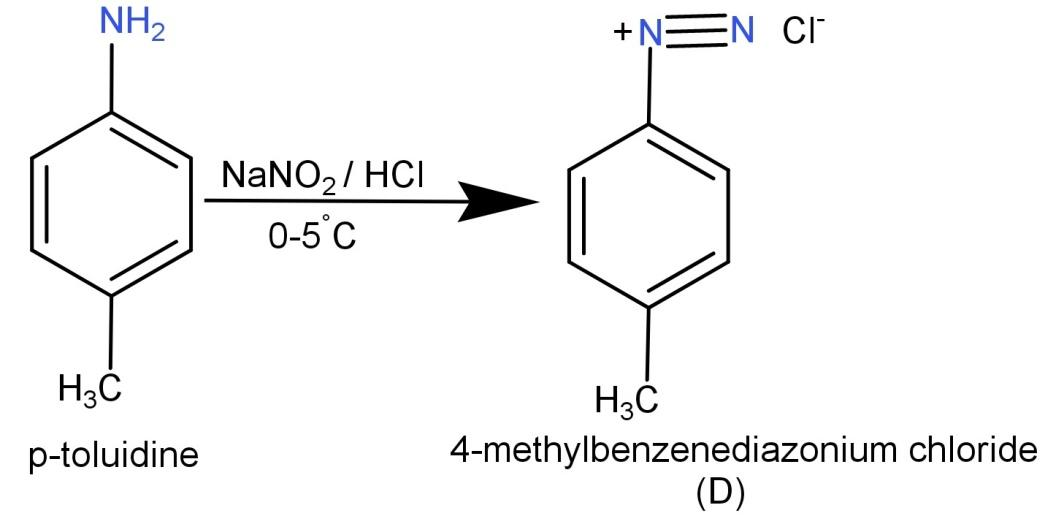
Now (D) 4-methylbenzenediazonium chloride is reacted with CuCN or KCN. CuCN or KCN has the ability to replace the diazonium group with the cyano group. So when we react with 4-methyl benzenediazonium chloride with CuCN or KCN it replaces the diazonium group with cyano group which leads to the formation of 4-methyl benzonitrile. Hence the final product (E) is 4-methyl benzonitrile. The reaction is shown below:
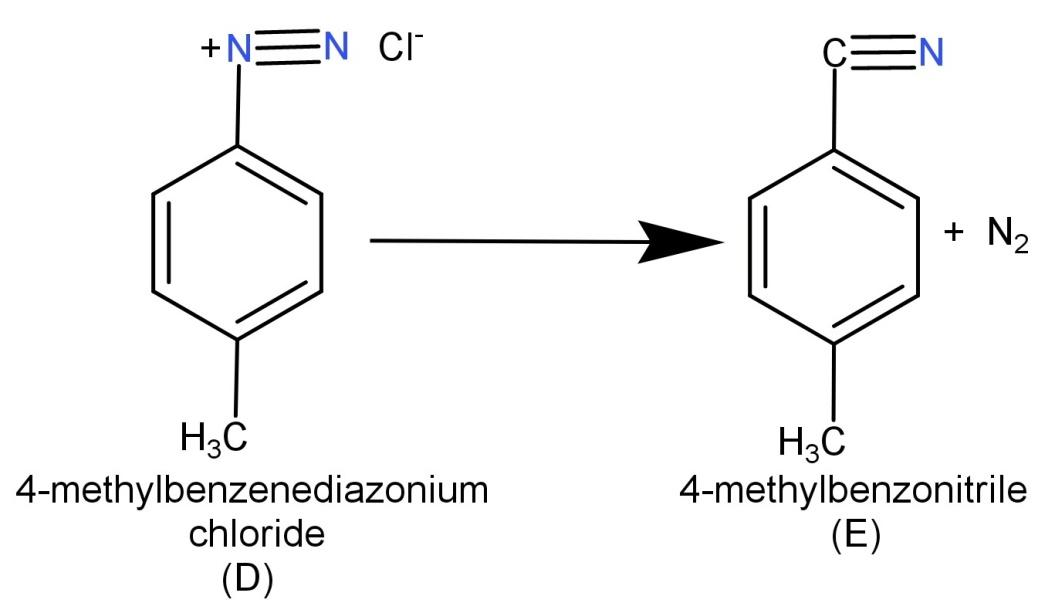
-Hence we can conclude that (E) is 4-methyl benzonitrile.
(C)
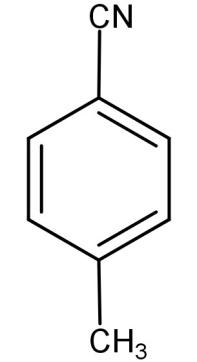
So, the correct answer is “Option C”.
Note: The diazonium salts are unreactive and hence serve as important synthetic reagents for the formation of dyes and in organic substituents. They can undergo coupling reactions for the formation of azo dyes and also electrophilic substitution reactions for the introduction of functional groups.
Complete step by step answer:
In this question we need to go step by step for each reactant and first find D and then E.
-So, let us begin by finding D.
We know that the initial given compound is p-toluidine (${H_3}C - {C_6}{H_4} - N{H_2}$) and it is reacted with $NaN{O_2}/HCl$ which are responsible for diazotization reaction.
The diazotization reaction is a reaction where a primary aromatic amine is converted to its corresponding diazonium salt by the use of nitrous acid and some other acid.
So, p-toluidine (${H_3}C - {C_6}{H_4} - N{H_2}$) on reaction with $NaN{O_2}/HCl$, leads to the formation of its corresponding diazonium salt which is compound (D). This compound (D) is 4-methyl benzenediazonium chloride. The reaction is shown below:

Now (D) 4-methylbenzenediazonium chloride is reacted with CuCN or KCN. CuCN or KCN has the ability to replace the diazonium group with the cyano group. So when we react with 4-methyl benzenediazonium chloride with CuCN or KCN it replaces the diazonium group with cyano group which leads to the formation of 4-methyl benzonitrile. Hence the final product (E) is 4-methyl benzonitrile. The reaction is shown below:

-Hence we can conclude that (E) is 4-methyl benzonitrile.
(C)

So, the correct answer is “Option C”.
Note: The diazonium salts are unreactive and hence serve as important synthetic reagents for the formation of dyes and in organic substituents. They can undergo coupling reactions for the formation of azo dyes and also electrophilic substitution reactions for the introduction of functional groups.
Recently Updated Pages
Who among the following was the religious guru of class 7 social science CBSE

what is the correct chronological order of the following class 10 social science CBSE

Which of the following was not the actual cause for class 10 social science CBSE

Which of the following statements is not correct A class 10 social science CBSE

Which of the following leaders was not present in the class 10 social science CBSE

Garampani Sanctuary is located at A Diphu Assam B Gangtok class 10 social science CBSE

Trending doubts
A rainbow has circular shape because A The earth is class 11 physics CBSE

Which are the Top 10 Largest Countries of the World?

Fill the blanks with the suitable prepositions 1 The class 9 english CBSE

How do you graph the function fx 4x class 9 maths CBSE

What is BLO What is the full form of BLO class 8 social science CBSE

The Equation xxx + 2 is Satisfied when x is Equal to Class 10 Maths

Give 10 examples for herbs , shrubs , climbers , creepers

Difference between Prokaryotic cell and Eukaryotic class 11 biology CBSE

Change the following sentences into negative and interrogative class 10 english CBSE

